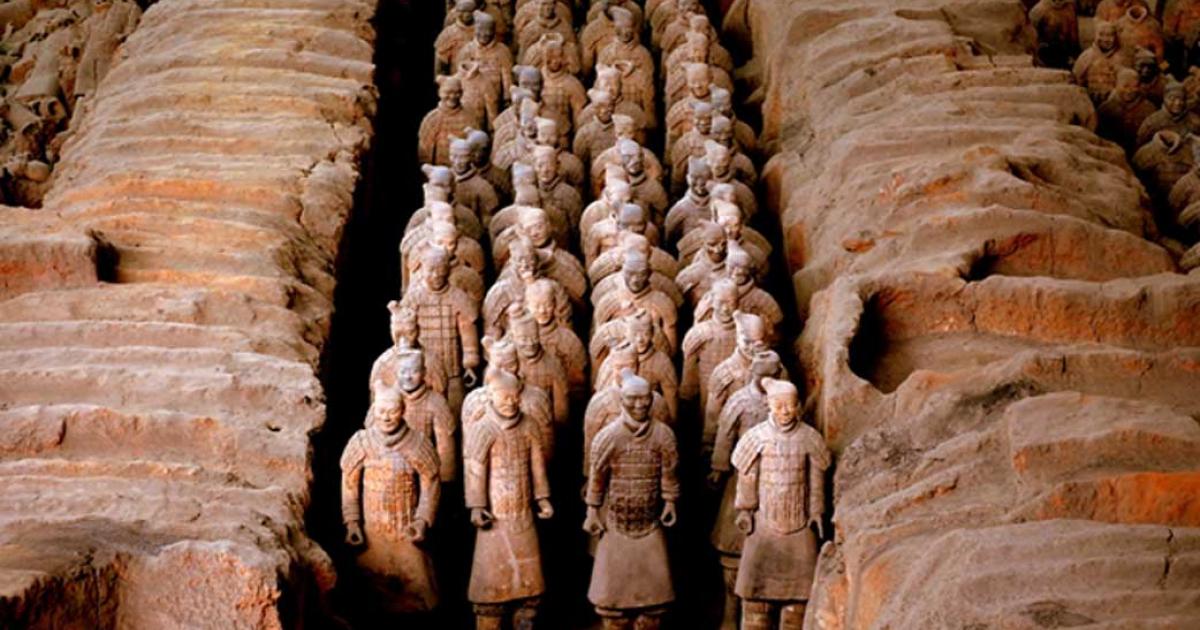
Terracotta Army Weapons Were Genuine, Military Grade and State of the Art
In 1974 in Xi’an, China, one of the world’s most phenomenal archaeological discoveries occurred. It was the moment when more than 8000 full scale warriors cast of clay were rediscovered after been hidden for over two millennia. The vast army in waiting would become known as the ‘Terracotta Army’.
The warriors themselves were skillfully sculpted from clay. It was not until almost three decades after the initial discovery that research revealed that the weapons the army had been provided with were real and not replicas. What’s more, they were state of the art, with the crossbows being powerful enough to pierce contemporary armor and kill opponents with a single bolt.
- Excellently preserved, complete crossbow from 2,200 years ago found at Terracotta Warrior site
- Controversial New Theory Suggests Ancient Greeks Helped Build Terracotta Army in China

Terracotta Weapons: Dagger-Axe Blades, Sword, and Crossbow Bolts (CC BY-NC 2.0)
The terracotta army is now around 2,200 years old and is located at what might rightly be considered the greatest mausoleum in the world, that of Emperor Qin Shi Huang, known as the First Emperor of China. The mausoleum complex essentially recreated the Emperors living environment ready for the afterlife. It is believed that the purpose of the army was to ensure the eternal safety of his journey in the afterlife. They were found as part of the huge complex covering 19.3 square miles (50 sq km). They were equipped with the latest weaponry, which would allow the army to effectively defend their king. According to an Archaeology International article, in excess of 40,000 bronze weapons were recovered with the warriors.
- New Dig at First Emperor Mausoleum Expected to Yield up to 1400 More Terracotta Warriors
- Secrets of Chinese Terracotta Army Weapons Revealed

The most complete ancient crossbow to date was discovered in the terracotta army pit one in Xi’an, Shaanxi province. Credit: Chinanews.com
Arrowheads were by far the most abundant weaponry to be found. They were in bundles of 100 units which are thought to represent the contents of a single crossbowman's quiver. Each arrow was composed of the triangular pyramid-shaped projectile point, and a tang which assisted the point's snug insertion into a bamboo or wood shaft, with a feather attached at the distal end. The metallic components of the arrow (ie. the arrowhead and the tang) are the only parts that were preserved.

A handful of arrowheads from the 40000 recovered from the Terracotta Army (Image: Archaeology International CC BY 3.0)
Scientists from the University College London and the Terracotta Army Museum reproduced arrowheads from 200BC when the Terracotta Army was built and tested them with a crossbow of that period. The results showed that the arrows easily pierced through the armor used in 2 nd century BC in China and would have been capable of inflicting a fatal blow.
“These crossbows were two millennia ahead of their time,” said Mike Loades, historian and expert in ancient weapons.
- Why There Is So Much Backlash to the Theory that Greek Art Inspired China’s Terracotta Army
- Technology Reveals Chinese Terracotta Warriors Were Likely Replicas of Real Soldiers

Bronze trigger for a crossbow excavated from Terracotta Army pit No. 1 (CC BY-NC 2.0)
These findings amongst others were broadcast on a documentary ‘ New Secrets of the Terracotta Warriors’ on the UK’s Channel Four.
“Amongst the many new findings, the film reveals the true extent of the site and number of warriors and that the weapons carried by the warriors were full military grade, rather than replicas: they were designed to kill as efficiently in the afterlife as in this one,” the producers wrote. “New insights into how the figures were made, including revolutionary 3D computer modeling of the warriors' heads, challenges the traditional explanation and changes our understanding of how sophisticated technology and society were in ancient China.”
Top image: Terracotta Warriors, Xi’an, China. (Public Domain)
By John Black















